Abstract
Two experiments investigated the extent to which response contingencies influence the choice between two schedules of reinforcement by exposing pigeons to a concurrent-chains procedure in which reinforcers in one terminal link were response-independent, and in the other terminal link, response-dependent. In Experiment 1, the pigeons were indifferent between an aperiodic, response-independent schedule and an aperiodic, response-dependent schedule that required a minimum rate of responding. This finding limits the generality of a required-rate contingency as a determinant of choice, which contingency had been previously demonstrated in a context of periodic reinforcement to evoke preference for an alternate schedule. In Experiment 2, the pigeons preferred a periodic, response-independent schedule to a periodic, response-dependent schedule that shared a feature with a required-rate schedule: there was a requirement to respond early in the interreinforcement interval, when responding produced reinforcement only later. The results of the two experiments suggest the following general interpretation: pigeons prefer a second schedule to the extent that the response contingencies of the first schedule must be satisfied during discriminable periods of nonreinforcement.
Full text
PDF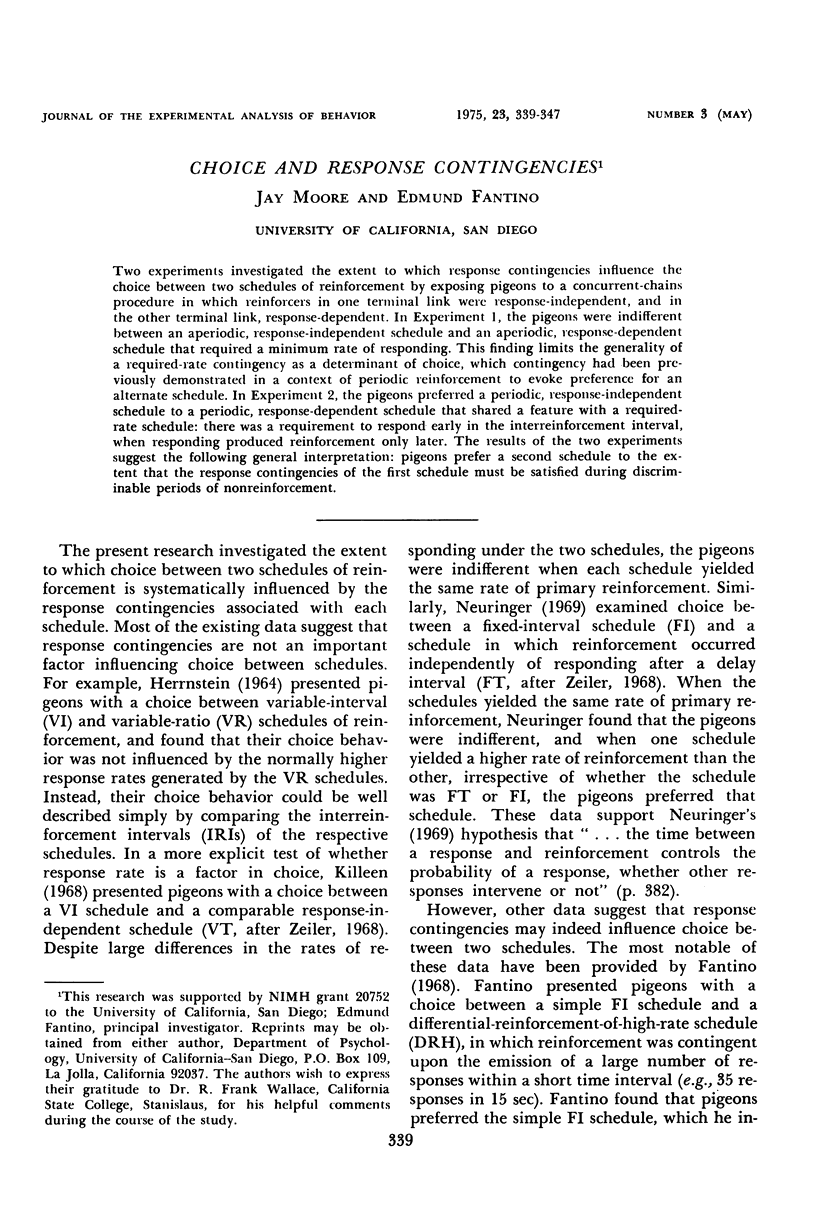
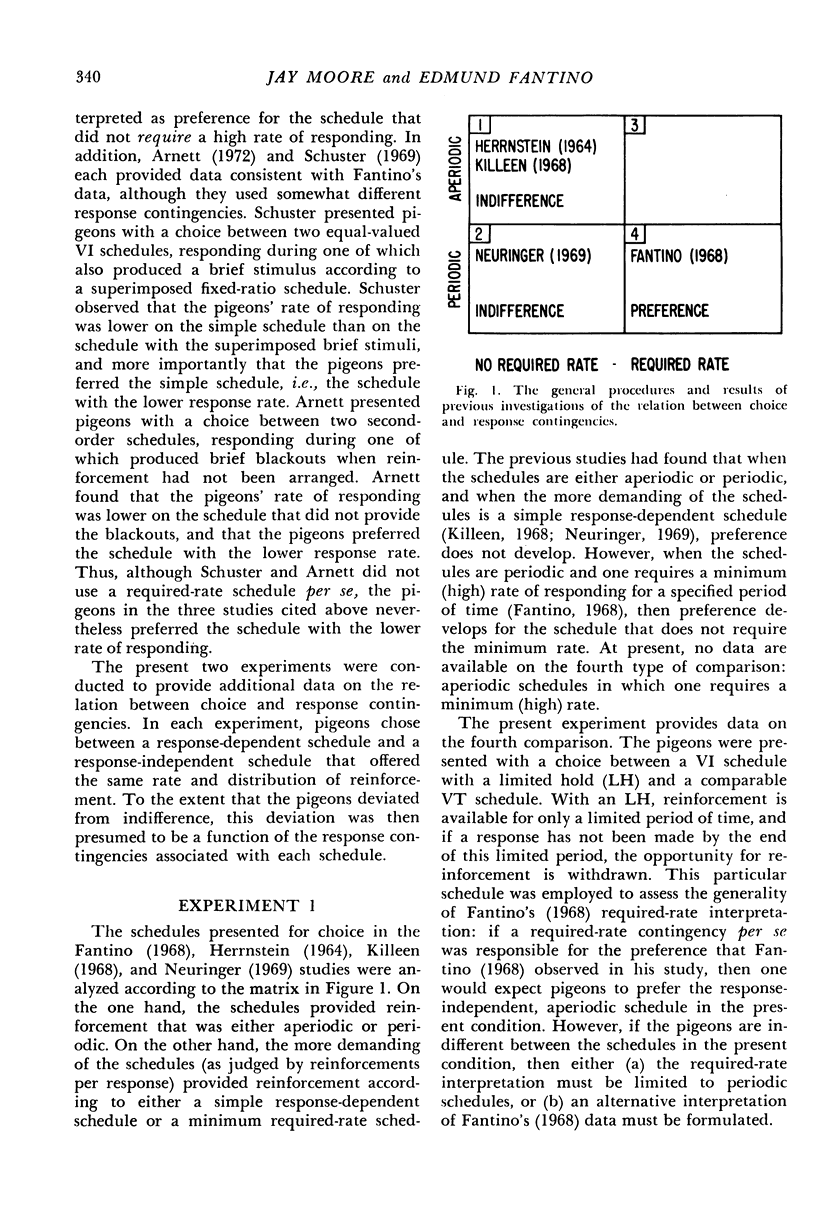
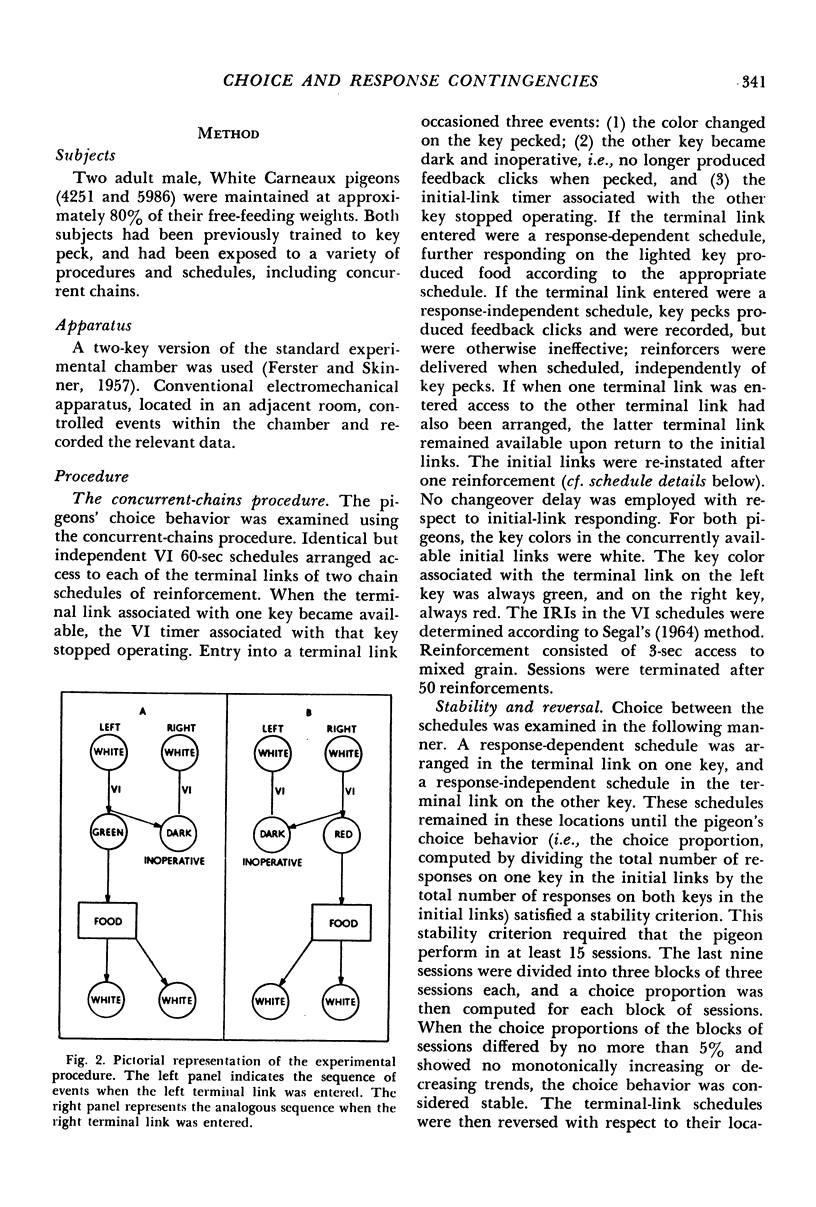
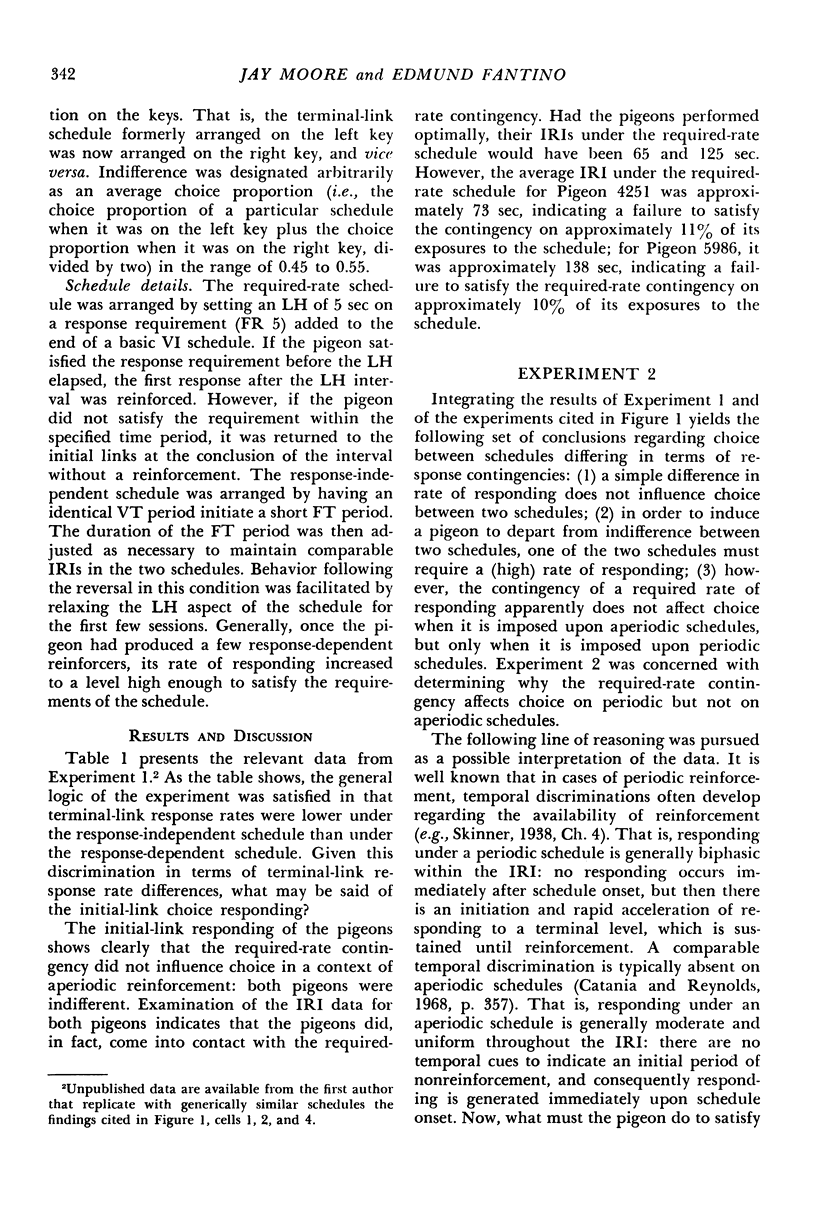
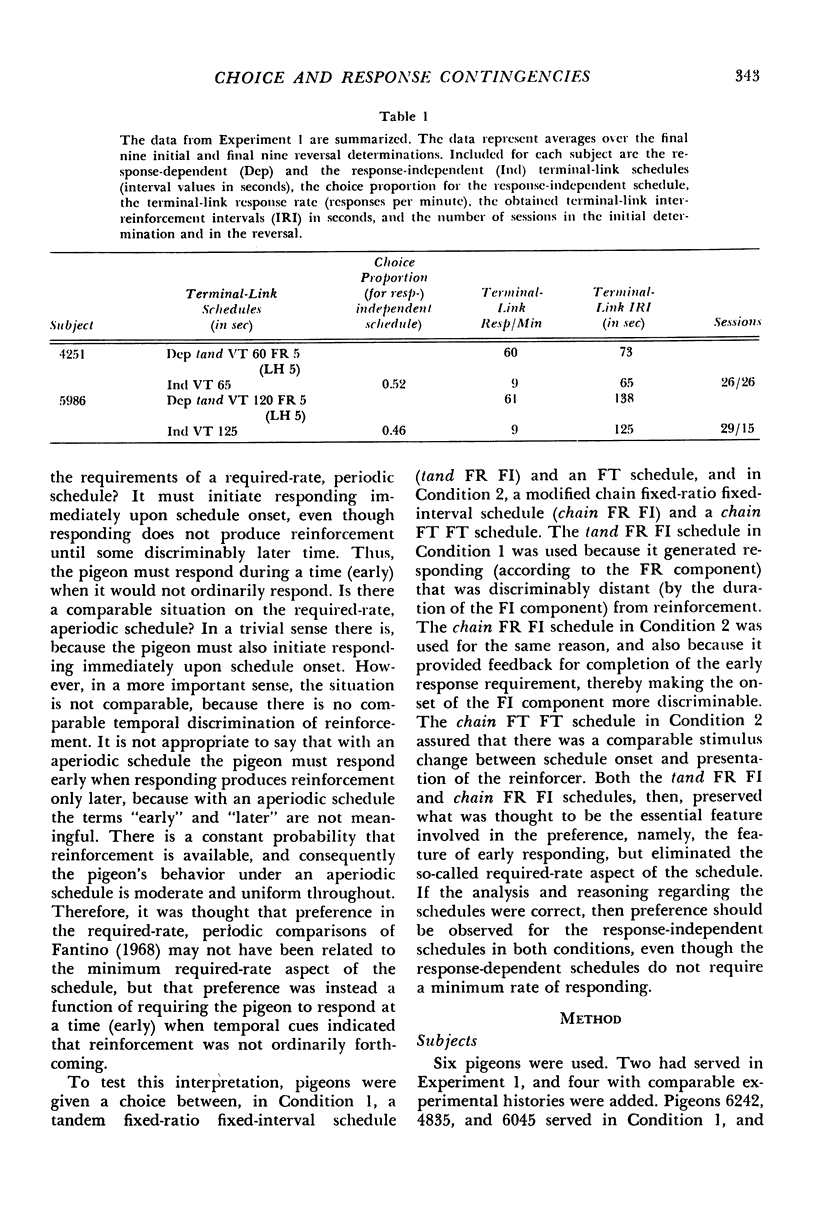
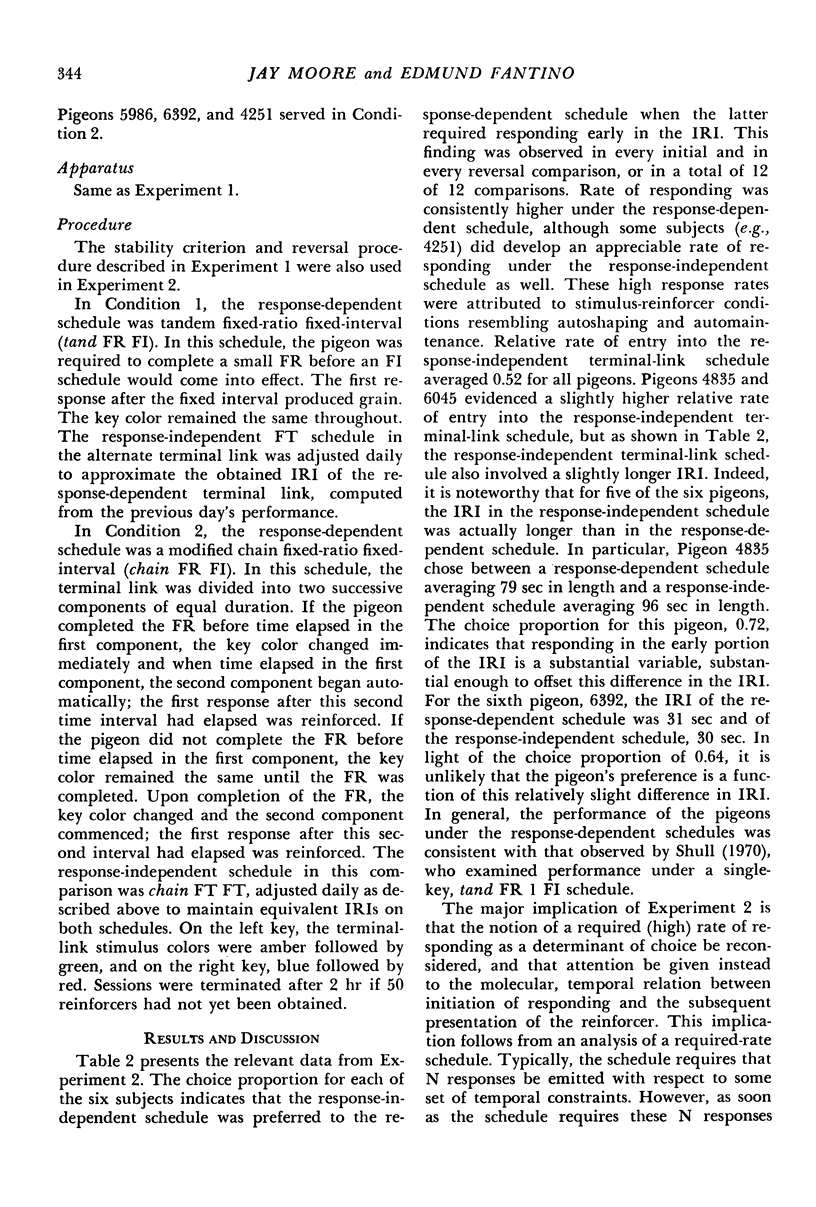
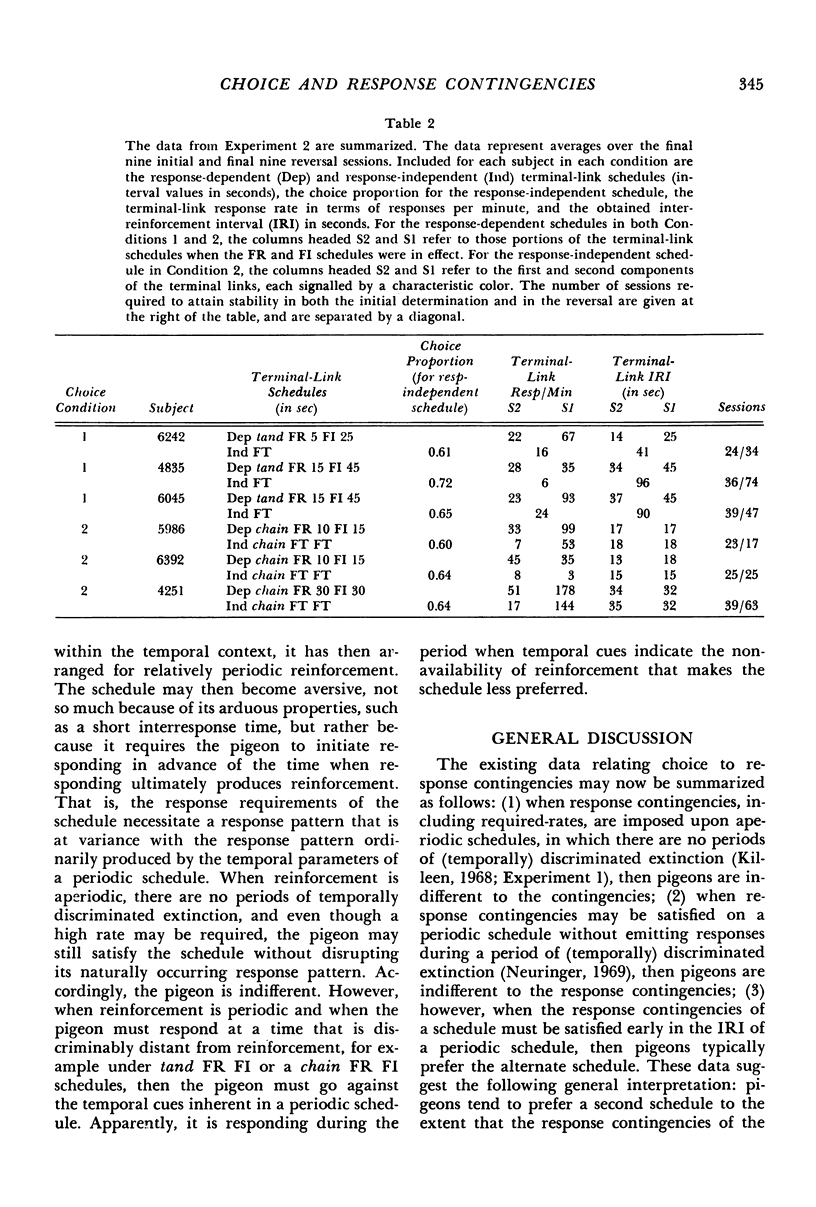
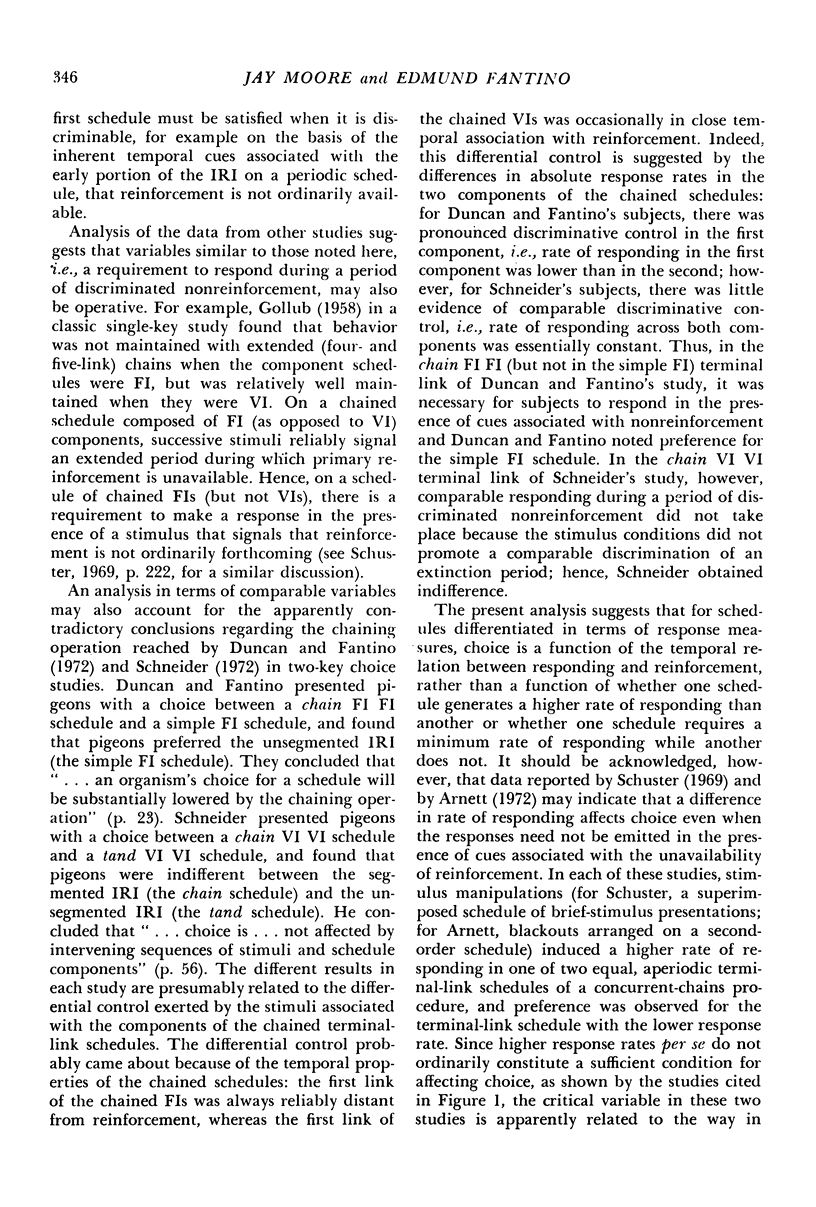
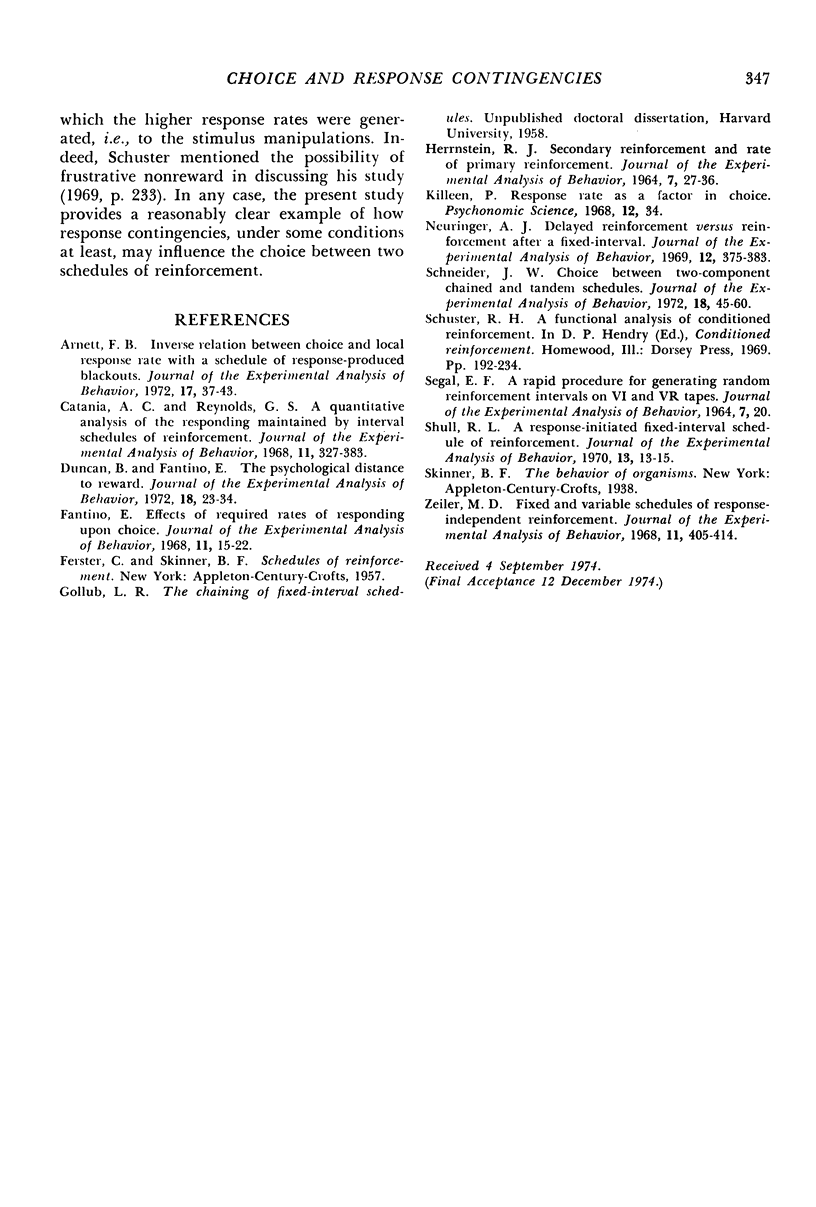
Selected References
These references are in PubMed. This may not be the complete list of references from this article.
- Catania A. C., Reynolds G. S. A quantitative analysis of the responding maintained by interval schedules of reinforcement. J Exp Anal Behav. 1968 May;11(3 Suppl):327–383. doi: 10.1901/jeab.1968.11-s327. [DOI] [PMC free article] [PubMed] [Google Scholar]
- Duncan B., Fantino E. The psychological distance to reward. J Exp Anal Behav. 1972 Jul;18(1):23–34. doi: 10.1901/jeab.1972.18-23. [DOI] [PMC free article] [PubMed] [Google Scholar]
- Fantino E. Effects of required rates of responding upon choice. J Exp Anal Behav. 1968 Jan;11(1):15–22. doi: 10.1901/jeab.1968.11-15. [DOI] [PMC free article] [PubMed] [Google Scholar]
- HERRNSTEIN R. J. SECONDARY REINFORCEMENT AND RATE OF PRIMARY REINFORCEMENT. J Exp Anal Behav. 1964 Jan;7:27–36. doi: 10.1901/jeab.1964.7-27. [DOI] [PMC free article] [PubMed] [Google Scholar]
- Schneider J. W. Choice between two-component chained and tandem schedules. J Exp Anal Behav. 1972 Jul;18(1):45–60. doi: 10.1901/jeab.1972.18-45. [DOI] [PMC free article] [PubMed] [Google Scholar]
- Shull R. L. A response-initiated fixed-interval schedule of reinforcement. J Exp Anal Behav. 1970 Jan;13(1):13–15. doi: 10.1901/jeab.1970.13-13. [DOI] [PMC free article] [PubMed] [Google Scholar]
- Zeiler M. D. Fixed and variable schedules of response-independent reinforcement. J Exp Anal Behav. 1968 Jul;11(4):405–414. doi: 10.1901/jeab.1968.11-405. [DOI] [PMC free article] [PubMed] [Google Scholar]


